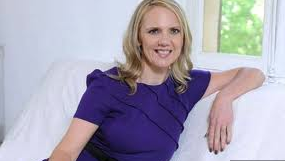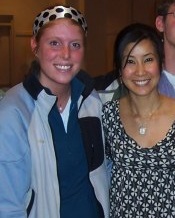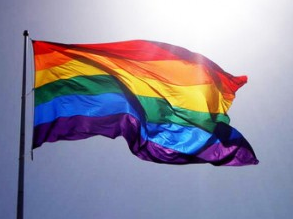A box of Kleenex stood in the middle of the floor. Within reach, a handful of mothers sat facing each other, ready to pull another tissue as they fought to regain their composure.
During the day, these women answered to the duties of teachers, college advisors, doctors and secretaries. But in each other’s company, they were mothers – mothers of lesbian, gay and bisexual (LGBT) sons and daughters.
Between hushed laments of “What did I do wrong?” and “It’s my fault,” a sense of solidarity slowly took hold.
In full attendance, about 30 members are now active with the Madison chapter of Parents, Friends and Family of Lesbians and Gays (PFLAG), which began over two decades ago. Some pay dues to show their support, even though they may have very little face time with other members. The group meets once a month, for two hours at the Friends Meeting House, to advance their three-part initiative: support, education and advocacy. 
I first heard about PFLAG while interviewing Casey Garhart, a long-time local member, for a story on straight allies. At my request, four other PFLAG women organized an impromptu weeknight meeting at Jo Elder’s house to share their experiences as allies.
Their energy felt easy. However, as they took turns sharing their personal stories, I caught a glimpse of the path each forged to get to this point.
Elder is 80 years old, but she remembers the pivotal conversation she had with her youngest son while she was giving him a hair cut. They were talking about a touring play called “Seven Brides for Seven Brothers,” when her son segued straight into the fact that it was the “brothers that turned him on.” Apparently he had been dropping clues for quite some time, but she had repelled them all.
“You couldn’t be dumber,” she said, slightly amused by her lack of paternal intuition.
This comment triggered a chorus of agreement from Carol Holterman, Kay Heggestad and Sharon Whitney. As exhibited by these veterans, emotional support is a fundamental component of PFLAG. Every time they suspect they have exhausted this mission, someone new comes searching for a sympathetic ear and fresh perspective.
“When you no longer need PFLAG, PLFAG needs you,” Whitney explained.
Often times it is the mother who makes initial contact with the group; but many fathers have also come out in support of their sons and daughters. Part way through the evening, Jo’s husband, Joe Elder, joined us. Not only is he one of the initial Madison PFLAG members, but he also spearheaded the LGBT studies curriculum at UW-Madison.
This drive to educate is central to the group’s mission. They are both students and educators, themselves. Each meeting starts with a guest speaker who offers insight into issues of identity and discrimination that LGBT people face. In order to inform the greater public on such issues of equality, these men and women continue to construct their own curriculum.

This book is a group favorite. Previously, a few of the characters were active in the Madison PFLAG chapter.
In response to difficulties they privately encountered in trying to find relevant library books, they went ahead and created their own public collection.
Whitney remembers feeling self-conscious when she first started hunting through used book stores, thinking, “They’re gonna think I’m a lesbian.
Jo Elder described a similar scenario: squirreling through the stacks to find a stash of LGBT resources that were actually locked out of reach from vandals. Eventually she had to go up to the librarian.
“I had to confess what I was looking for, in order to get the books,” she said. “And you know, they weren’t very good books.”
As our conversation turned to books, Holterman passed around a new photography book on transgender people that she had brought along to share. Her youngest son had completed the female to male transition and she took pride in educating herself on his identity.
Initially, she had blamed herself for being inadequate as a single parent. All it took, however, was one authority figure calling her son “unacceptable” to extinguish this sense of insecurity.
“He may do some things that are unacceptable, but he is never unacceptable,” she asserted. “I went all tiger mom on that one.”
Advocacy is the third PFLAG initiative. Every summer, these mothers and fathers voluntarily staff a table at the Dane County Farmer’s Market. They take turns hauling their banner and PFLAG swag back and forth each week, rain, snow or shine. They are a familiar public interface, able to reach potential allies.
“Had [my son] not come out, I never would have been a straight ally,” said Heggestad. “Unless someone had come up to me and said, ‘Hey, this is a really important issue.’ I think that’s what’s going on with a majority of folks out there. They figure, ‘It’s not my issue. I’m not against LGBT people, but I’m not gonna go out and campaign for them.’”
Apathy may be a difficult sentiment to target, but these allies remain undeterred. Sharing their stories for the umpteenth time and getting carried away on friendly tangents, they went through a carafe of coffee while we were all sitting in the Elders’ living room.
Dishes of nuts and fruit covered the center stool and we celebrated with a birthday cake interlude. For an hour and a half, we ate, drank and laughed without a Kleenex in sight.









